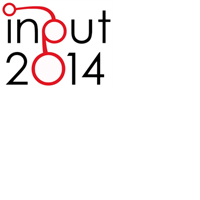Crowdsourcing. A Citizen Participation Challenge
Abstract
This paper is a work in progress on Crowdsourcing. First, its concepts and importance are discussed and then its value for citizenship and urban planning. The motivation for participation and the display of geo-tagged information, as well as its possible applications in dynamic spatial temporal issues are presented, as well as its different approaches and applications. Furthermore, Crowdsourcing is discussed when the “ONVCêVIU”, a VGI case study, is presented, revealing its origin, objective, free platform comparison - to select the proper tool to implement, the project’s main challenges, results so far and further steps to be taken. To conclude a short review of the author’s vision about what is to come in the future research.Downloads
References
Andrienko, G. Andrienko, N. Bosch, H. Ertl, T. Fuchs, G. Jankowski, P. Thom, D. Thematic Patt erns in Georeferenced Tweets through Space-Time Visual Analytics. In: Computing in Science & Engineering. Visualization Corner. Copublished by the IEEE CS and the AIP. 2013.
Gardner, H. The theory of multiple intelligences. Annals of Dyslexia. 1987, Volume 37, Issue 1, pp 19-35.
Godoy, V. F., Moura, A. C. M. Paisagem cultural do centro do Rio de Janeiro identificação, caracterização e representação do olhar da comunidade com o apoio da cartografia e da navegação virtual. 2011. Dissertação (Mestrado em Mestrado em Geografia) - Universidade Federal de Minas Gerais.
Goodchild, M. F. "Citizens as Voluntary Sensors: Spatial Data Infrastructure in the World of Web 2.0."International Journal of Spatial Data Infrastructures Research 2: 24-32, 2007.
Miranda, T. S.; Lisboa Filho, Jugurta; Souza, W. D.; Silva, O. C.; Davis Junior, C. A.. Volunteered Geographic Information in the Context of Local Spatial Data Infrastructures. In: Urban Data Management Symposium (UDMS), 2011, Delft, Holanda. Proceedings of the 28th Urban Data Management Symposium. Leiden, The Netherlands: CRC Press/Balkema, Taylor & Francis, 2011. p. 123-138.
Jankowski, P. Andrienko, G. Andrienko, N. Kisilevich, S. Discovering Landmark Preferences and Movement Patterns from Photo Postings. In: Transactions in GIS, 2010, 14(6): 833–852. Blackwell Publishing Ltd.
Moura, A. C. M. Amorim, Leandro Q.. Simulação de transformação nas paisagens de mineração de ferro a céu aberto metodologia de análise e simulação de gestão de paisagens. In: XIII Simpósio Brasileiro de Sensoriamento Remoto, 2007, Florianópolis. Anais do XIII Simpósio Brasileiro de Sensoriamento Remoto. São José dos Campos: Instituto Nacional de Pesquisas Espaciais, 2007. v. 1. p. 4073-4080.
Moura, A. C. M. Geoprocessamento na gestão da paisagem minerada. BRUNO, Roberto, FOCACCIA, Sara (ed.). Formazione avanzata nel settore delle rocce ornamentali e delle geoelaborazioni. Bologna-Itália, Editora Asterisco, 2009. p. 102-152.
Moura, A. C. M. O geoprocessamento na gestão da paisagem mineira - confronto de metodologias para a análise e monitorização ambiental de georecursos. COSTA, Antônio G., MOURA, Ana Clara M. (Editors). Formação avançada no setor das rochas ornamentais e geoprocessamento. Advanced Training in Ornamental Stones and Geoprocessing. CPMTC-IGC-UFMG, 2010. p. 51 - 78.
Moura, A. C. M. Geoprocessamento na Gestão e Planejamento Urbano. 1st edition. Belo Horizonte: Ed. da Autora, 2003. v. 1. 294p.
Silva, J. C. T. DA; Davis Junior, C. A. Um framework para coleta e filtragem de dados geográficos fornecidos voluntariamente. In: X Brazilian Symposium on GeoInformatics, 2008, Rio de Janeiro (RJ).
Sui, Daniel. Elwood, Sarah. Goodchild, Michael. Crowdsourcing Geographic Knowledge. Dordrecht, Heidelberg, New York and London: Ed: Springer. 2013. 396 p.

Copyright (c) 2014 Tema. Journal of Land Use, Mobility and Environment

This work is licensed under a Creative Commons Attribution 4.0 International License.
Authors who publish in this journal agree to the following:
1. Authors retain the rights to their work and give in to the journal the right of first publication of the work simultaneously licensed under a Creative Commons License - Attribution that allows others to share the work indicating the authorship and the initial publication in this journal.
2. Authors can adhere to other agreements of non-exclusive license for the distribution of the published version of the work (ex. To deposit it in an institutional repository or to publish it in a monography), provided to indicate that the document was first published in this journal.
3. Authors can distribute their work online (ex. In institutional repositories or in their website) prior to and during the submission process, as it can lead to productive exchanges and it can increase the quotations of the published work (See The Effect of Open Access)
